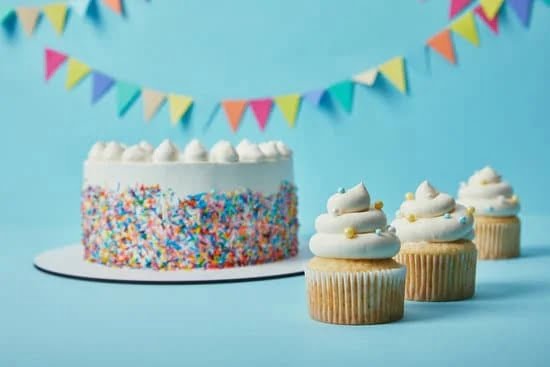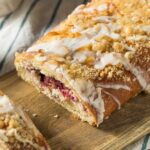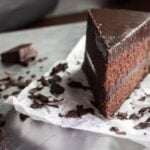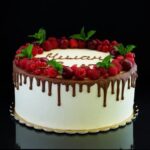Are you wondering how to make cake decorations out of icing? Cake decorating is an art that allows you to express your creativity and add a personal touch to any baked creation.
From simple flowers to intricate designs, mastering the art of icing decorations can take your cakes from ordinary to extraordinary. In this article, we will explore the various types of icing for cake decorations, essential tools and equipment needed, step-by-step guides for creating different designs, troubleshooting common issues, and alternative ways to use icing for decorating.
When it comes to cake decorating, the type of icing you use plays a crucial role in achieving the desired result. Whether it’s buttercream, royal icing, fondant, or gum paste, each type of icing has its own unique properties and uses for creating decorations. Understanding these differences will help you choose the right icing for your specific design and ensure success in your decoration endeavors.
In addition to knowing about the different types of icing, having the right tools and equipment is essential for making beautiful icing decorations. Piping bags, tips in various shapes and sizes, spatulas, and shaping tools are just a few examples of what you’ll need to create impressive decorations. With the proper tools at your disposal, you’ll be able to bring your creative visions to life through your cake decorations.
Types of Icing for Cake Decorations
When it comes to cake decorating, the type of icing you choose can greatly impact the overall look and feel of your cake. There are several different types of icing that can be used to create beautiful decorations, each with its own unique properties and techniques. Here, we’ll discuss the various types of icing for cake decorations and how you can use them to achieve stunning results.
- Buttercream: Buttercream is a classic choice for cake decorations due to its smooth texture and creamy flavor. It’s easy to work with and can be piped into intricate designs or used as a base for other decorative elements. With buttercream, you can create delicate flowers, borders, and even 3D shapes.
- Royal Icing: Royal icing is a versatile icing that hardens when dried, making it perfect for creating detailed decorations that hold their shape. It’s commonly used for intricate designs like lace patterns, scrolls, and lettering. Royal icing can also be colored using gel or powder food coloring to achieve vibrant shades.
- Fondant: Fondant is a pliable icing that can be rolled out and draped over cakes to create a smooth, flawless finish. It’s also ideal for creating sculpted decorations such as bows, ribbons, and figurines. Fondant can be flavored and colored in various ways to match the theme or flavor of your cake.
- Gum Paste: Gum paste is similar to fondant but dries firmer, making it perfect for creating delicate sugar flowers, leaves, and other botanical elements. It’s great for adding intricate detail to your cakes and can be tinted with edible dusts or paints to achieve lifelike colors.
Each type of icing has its own set of techniques and best practices for working with it. Whether you’re looking to create simple floral designs or elaborate 3D sculptures, mastering the art of using these different icings will greatly enhance your cake decorating skills. With the right tools and knowledge on how to make cake decorations out of icing, you’ll be able to bring your creative vision to life on every cake you decorate.
Essential Tools and Equipment for Making Icing Decorations
Cake decorating is an art form that allows for endless creativity and expression. Whether you’re a professional pastry chef or a home baker, understanding how to make cake decorations out of icing is an essential skill to have in your repertoire. In order to create stunning and intricate designs, it’s important to have the right tools and equipment at your disposal.
One of the most essential tools for making icing decorations is the piping bag. These come in various sizes and materials, such as plastic or reusable fabric, and are used for piping different designs onto cakes and cupcakes.
Along with piping bags, using the right tips is crucial for achieving different textures and shapes with your icing. Tips come in a wide range of styles, including round tips for outlining and writing, star tips for creating borders and swirls, and petal tips for making flower petals.
Spatulas are also indispensable when it comes to smoothing icing onto cakes or creating textured finishes. They come in offset or straight styles to suit different decorating techniques. Additionally, shaping tools such as fondant cutters, embossers, and molds can be used to add intricate details and patterns to your icing decorations. With these essential tools at hand, you’ll be well-equipped to bring your creative cake decorating ideas to life with homemade icing decorations.
Step-by-Step Guide for Making Simple Icing Flowers
One of the most beautiful and classic cake decorations is the icing flower. These delicate and intricate designs add a touch of elegance to any cake, and they are surprisingly easy to make with the right technique. In this section, we will provide you with a step-by-step guide on how to make simple icing flowers such as the rose, daisy, and sunflower.
To start, you will need the following tools and equipment: piping bags, different sizes of round and star-shaped piping tips, flower nails, parchment paper squares, and a flat spatula. You will also need your choice of buttercream or royal icing in various colors to create vibrant and realistic flowers.
Once you have all your supplies ready, you can begin by practicing the basic piping techniques for each type of flower. For the rose, start by piping a small cone shape in the center of the flower nail, then pipe overlapping petals around it in a circular motion.
For the daisy, use a round tip to pipe a circle of small teardrop-shaped petals around a central point. For the sunflower, use a star tip to pipe large petals in a circular pattern around a central point.
The key to making realistic icing flowers is practice and patience. It may take some time to perfect your technique, but with dedication and attention to detail, you can create stunning floral decorations for your cakes that will impress everyone who sees them.
| Icing Flower | Technique |
|---|---|
| Rose | Pipe overlapping petals in circular motion |
| Daisy | Use round tip to pipe teardrop-shaped petals in circle |
| Sunflower | Use star tip to pipe large petals in circular pattern |
With these step-by-step instructions on how to make cake decorations out of icing flowers, anyone can master these classic designs and elevate their cake decorating skills to new heights. Practice makes perfect when it comes to creating these delicate designs with precision and finesse. Remember that experimenting with different colors and techniques can lead to stunning and unique floral decorations that will make your cakes stand out at any event or gathering.
Techniques for Creating Intricate Icing Designs
Creating intricate icing designs adds a professional and elegant touch to any cake. Whether it’s for a special occasion or just for fun, mastering these techniques can take your cake decorating skills to the next level. There are several ways to achieve intricate icing designs, including scrolls, lace, and advanced piping techniques.
Scrolls
Scrolls are a classic and timeless way to add elegance to your cake decorations. To create scrolls with icing, you’ll need a steady hand and the right piping tip. Start by practicing making smooth lines on a practice surface before moving onto your cake. Once you’re comfortable with the motion, you can start adding delicate loops and curves to create beautiful scrollwork on your cakes.
Lace
Icing lace adds a delicate and intricate look to your cake decorations. There are various techniques for creating edible lace using icing, including using lace molds or piping them directly onto your cake. You can also use edible lace sheets that come in different patterns and designs to add an extra layer of elegance to your creations.
Piping Techniques
Advanced piping techniques such as basketweave, lattice work, and filigree can elevate the look of your cakes. These techniques require precision and practice, but the results are truly impressive. With the right piping tips and a steady hand, you can create stunning patterns and designs that will leave everyone impressed.
Mastering these intricate icing designs requires patience, practice, and attention to detail. With time and dedication, you can take your cake decorating skills to new heights while impressing your friends and family with beautifully decorated homemade treats using how to make cake decorations out of icing
Tips for Coloring Icing and Achieving Different Shades for Decorations
Coloring icing is an essential part of cake decorating, as it adds a pop of color and makes your creations visually appealing. Understanding how to achieve different shades and colors will take your icing decorations to the next level.
To start, here are some tips for coloring icing effectively:
1. Use gel or paste food coloring: These types of food coloring are concentrated, allowing you to achieve vibrant colors without altering the consistency of the icing. Gel or paste food coloring also prevents the icing from becoming too runny, which can happen with liquid food coloring.
2. Start with a small amount: You can always add more color to reach your desired shade, but it’s challenging to lighten overly colored icing. Add a small amount at a time and mix thoroughly before adding more.
3. Mix primary colors: Instead of purchasing multiple bottles of pre-made colored icing, consider investing in primary colors and mixing them yourself to create unique shades for your decorations.
4. Use a color chart: If you’re aiming for a specific color, refer to a color chart to understand how different combinations of primary colors can produce the shade you’re looking for.
5. Consider natural food dyes: For those who prefer natural ingredients, there are options for creating food coloring from fruits and vegetables. This is not only environmentally friendly but also adds a touch of uniqueness to your decorations.
By following these tips, you can elevate your cake decorating skills and create stunning and colorful icing decorations that will impress everyone at the table.
Troubleshooting Common Issues When Making Icing Decorations
Dealing With Cracking
One of the common issues when making icing decorations is the occurrence of cracking. This can happen when the icing is too dry or if it has been overworked. To avoid cracking, make sure to knead your fondant or gum paste well before using it.
If you’re working with royal icing, adding a small amount of vegetable glycerin can help prevent cracking. Additionally, be mindful of the temperature and humidity in your workspace as extreme conditions can also lead to cracking.
Avoiding Air Bubbles
Air bubbles in your icing can ruin the smooth finish of your decorations. To prevent air bubbles from forming, make sure to properly knead and roll out your fondant or gum paste before using it.
When working with buttercream or royal icing, use a spatula to gently mix and push out any air that may be trapped in the icing. Another tip is to let your covered cake sit for a while after applying the buttercream or royal icing so that any air bubbles can rise to the surface and be popped before smoothing.
Addressing Consistency Issues
Achieving the right consistency for your icing is crucial for successful decorations. If your royal icing seems too runny, add more powdered sugar gradually until you reach the desired thickness. Conversely, if it’s too thick, slowly mix in small amounts of water until you achieve the right consistency.
With fondant and gum paste, if they are too dry and crumbly, knead in a bit of shortening or glycerin to soften them up. On the other hand, if they are too sticky and soft, sprinkle some powdered sugar on your work surface and knead it into the mixture until it reaches the appropriate consistency.
By understanding how to troubleshoot these common issues when making icing decorations, you can ensure that your creations turn out beautifully every time. Whether it’s addressing cracking, avoiding air bubbles, or adjusting consistency – mastering these troubleshooting techniques will take your cake decorating skills to new heights.
Alternative Ways to Use Icing for Cake Decorations
Icing is not only to make beautiful flowers and designs on cakes but can also be used for sculpting, modeling, and creating 3D designs to add a unique touch to your cake decorations. These techniques are perfect for creating custom cake toppers, themed cakes, and more. In this section, we will explore how to use icing for sculpting, modeling, and creating 3D designs that will elevate your cake decorating skills.
Sculpting with icing allows you to shape the icing into various figures such as animals, people, or objects. To start, it’s important to use a firm icing such as gum paste or fondant. These icings hold their shape well and are ideal for sculpting intricate details.
Once you have the desired consistency of icing, use shaping tools such as small knives, toothpicks, and fondant tools to mold the icing into the desired shape. Take your time and be patient as sculpting with icing requires attention to detail.
Modeling with icing involves creating small figurines or detailed objects using the same types of firmer icings like gum paste or fondant. This technique is popular for making characters for themed cakes or adding personalized elements to cake decorations. The key is to start with a small amount of icing and work slowly to form the shapes you desire. You can also enhance your models by using edible food color markers or dusts for added detail.
Creating 3D designs with icing is perfect for adding depth and dimension to your cake decorations. Using piping bags and tips, you can create raised patterns, intricate lace work, or even build up layers of icing for a multi-dimensional effect on your cakes. With practice and patience, you can master the art of using icing to create stunning 3D designs that will impress anyone who sees your cakes.
By exploring these alternative ways of using icing for cake decorations – sculpting, modeling, and 3D designs – you can take your cake decorating skills to new heights. Whether you’re creating custom cake toppers or adding unique elements to themed cakes, these techniques will allow you to showcase your creativity and imagination through the art of cake decorating.
Conclusion
In conclusion, learning how to make cake decorations out of icing can truly elevate your cake decorating skills to the next level. With the right understanding of different types of icing, essential tools and equipment, step-by-step guides for creating simple and intricate designs, coloring techniques, troubleshooting common issues, and alternative uses for icing, you can truly take your homemade cakes to a professional level.
By mastering the art of making icing decorations at home, you have the opportunity to personalize your cakes and add a personal touch that store-bought decorations simply cannot achieve. Whether it’s a simple rose or an intricate piping design, your homemade icing decorations will impress guests and elevate the overall presentation of your cakes.
With time and practice, you can perfect the skill of making beautiful and unique cake decorations out of icing. So why not start practicing today? Take the knowledge and tips from this article and start experimenting with different designs and techniques – soon enough, you’ll be known among friends and family as the go-to person for beautifully decorated cakes.
Frequently Asked Questions
Can You Freeze Icing to Make Decorations?
Yes, you can freeze icing to make decorations. Freezing icing allows you to create intricate designs and shapes that can be easily placed on cakes or pastries. Just make sure the icing is properly sealed to prevent freezer burn.
Can You Use Ready to Roll Icing to Make Decorations?
Ready to roll icing can definitely be used to make decorations. This type of icing is pliable and easy to shape, making it ideal for creating various decorative elements such as flowers, ribbons, and figures. It’s a convenient option for cake decorating.
Can You Freeze Frosting Into Shapes?
Freezing frosting into shapes is not recommended as it may alter the texture and consistency of the frosting. The water content in the frosting can cause ice crystals to form, leading to a grainy texture when thawed. It’s best to use other methods for creating frosting decorations.

Welcome to our cake decorating blog! My name is Destiny Flores, and I am the proud owner of a cake decorating business named Cake Karma. Our mission is to provide delicious, beautiful cakes for all occasions. We specialize in creating custom cakes that are tailored specifically to each customer’s individual needs and tastes.





